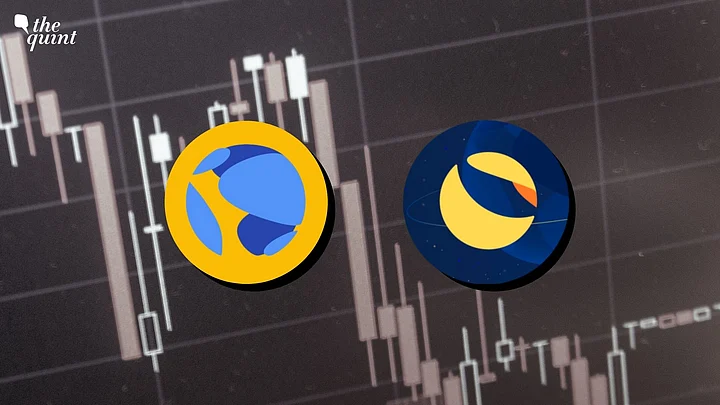Stablecoins constitute a unique category of cryptocurrencies designed to maintain a stable value by pegging their worth to a reserve asset, such as fiat currency or commodities. This mechanism addresses the notorious volatility associated with traditional cryptocurrencies like Bitcoin and Ethereum, making stablecoins more suitable for everyday transactions and a viable alternative for users seeking price stability in the digital asset space.
The stablecoin market has experienced remarkable growth in recent years. By 2024, the market capitalisation of stablecoins has surpassed $150 billion, with prominent players like Tether (USDT), USD Coin (USDC), and Binance USD (BUSD) at the forefront. This expansion highlights their rising adoption across diverse sectors, including remittances, trading, and decentralised finance (DeFi).
Stablecoins can be broadly classified into the following categories based on their underlying collateralisation methods:
Fiat-Collateralised Stablecoins
These stablecoins are backed by a reserve of fiat currency, typically held in a bank account. For every stablecoin issued, an equivalent amount of fiat currency is held in reserve, ensuring that the stablecoin maintains its value. Popular examples include Tether (USDT), the first and most widely used stablecoin, pegged to the US dollar, and USD Coin (USDC), a stablecoin backed by US dollar reserves and regularly audited to ensure transparency.
Fiat-collateralised stablecoins are generally considered the most straightforward and reliable form of stablecoin due to their direct link to fiat currencies.
Commodity-Backed Stablecoins
These stablecoins are pegged to the value of physical commodities. For example, Tether Gold (XAUt) is a stablecoin backed by gold reserves. The value of these stablecoins fluctuates with the market price of the underlying commodity, offering an alternative for users who prefer tangible assets as collateral.
Crypto-Collateralised Stablecoins
Crypto-collateralised stablecoins are backed by other cryptocurrencies. These stablecoins utilise smart contracts to lock up collateral, which can be volatile, to issue a stablecoin. An example is Dai, which is generated by locking Ethereum in a smart contract and minting Dai against it. This method allows for greater decentralisation but introduces risks associated with the volatility of the underlying cryptocurrency.
Algorithmic Stablecoins
Algorithmic stablecoins do not rely on collateral but use algorithms to control the supply of the stablecoin in response to market demand. When the price of the stablecoin deviates from its peg, the algorithm will either mint or burn coins to stabilise its value. This approach has seen mixed results, with several projects failing due to the complexities of maintaining price stability without collateral.
Stablecoins play several vital roles within the cryptocurrency ecosystem. By pegging their value to stable assets, they mitigate the volatility associated with traditional cryptocurrencies, making them more suitable for transactions and savings. They facilitate a range of activities, including remittances, online purchases, and trading on cryptocurrency exchanges, by providing a stable medium of exchange.
Additionally, stablecoins offer global access to financial services, enabling individuals in regions with unstable currencies to engage in the digital economy without depending on traditional banking systems. As digital assets, stablecoins are programmable and can be utilised for various financial applications, such as smart contracts, decentralised finance (DeFi), and automated trading strategies.
Stablecoins have found applications across various sectors, including cross-border payments, enabling fast and cost-effective international transactions, circumventing the high fees and lengthy processing times associated with traditional banking systems.
In the DeFi space, stablecoins are often used as collateral for loans, liquidity provision, and yield farming, allowing users to earn interest on their holdings. Merchants can accept stablecoins as a payment method, providing customers with a familiar and stable form of currency for transactions. Many cryptocurrency exchanges use stablecoins as trading pairs, allowing users to trade volatile cryptocurrencies against a stable asset, reducing risk during trades.
As the stablecoin market has grown, so has regulatory scrutiny. Governments and financial authorities are increasingly concerned about the potential risks of stablecoins, including consumer protection, financial stability, and anti-money laundering (AML) and know-your-customer (KYC) compliance. Without adequate regulation, users may face risks related to fraud, loss of funds, or lack of recourse in the event of a stablecoin issuer’s failure.
The rapid growth of stablecoins could pose risks to the broader financial system, particularly if they become widely adopted without proper oversight. The pseudonymous nature of many stablecoins raises concerns about their use in illicit activities, prompting calls for stricter compliance measures.
Global stablecoin regulations are evolving as governments recognise their potential and associated risks. The US is debating stablecoin regulations, Senators Cynthia Lummis and Kirsten Gillibrand introduced the Lummis-Gillibrand Payment Stablecoin Act, aiming to establish a regulatory framework for stablecoins to promote a safe, regulated market and maintain US dollar dominance. This bipartisan legislation seeks to foster the growth of stablecoins in the United States.
The EU’s MiCAR offers a comprehensive framework for stablecoin regulation, aiming for a harmonised regulatory environment. Singapore’s Payment Services Act and Japan’s Financial Services Agency provide clear regulatory frameworks, positioning them as hubs for cryptocurrency innovation.
The future of stablecoins appears promising, with ongoing developments and innovations in the space. Central Bank Digital Currencies (CBDCs) are being explored by various governments, which could offer a state-backed alternative to existing stablecoins. Additionally, the integration of stablecoins into traditional financial systems could pave the way for broader acceptance and use. However, the challenges of regulation, consumer protection, and technological risks will need to be addressed to ensure the long-term viability and stability of stablecoins as a financial instrument.
Stablecoins represent a significant evolution in the cryptocurrency world, bridging the gap between traditional finance and the digital asset world. By providing a stable value, they offer a practical solution for everyday transactions, investment opportunities, and financial services. As the market continues to mature, the role of stablecoins will likely expand, influencing the future of money and finance in the digital age.
(Sanhita Chauriha is a data privacy and technology lawyer. This is an opinion piece. The views expressed above are the author’s own. The Quint neither endorses nor is responsible for the same.)
(At The Quint, we question everything. Play an active role in shaping our journalism by becoming a member today.)
